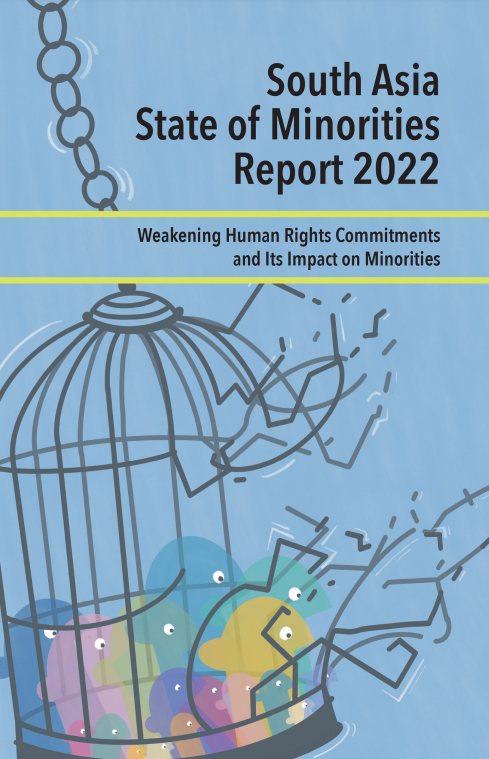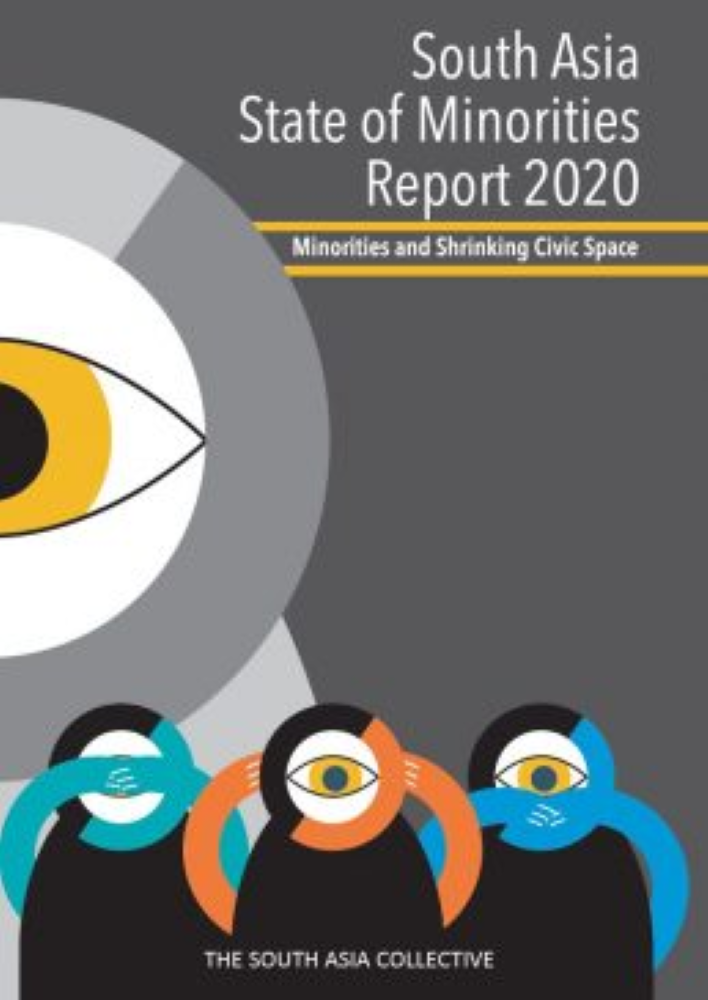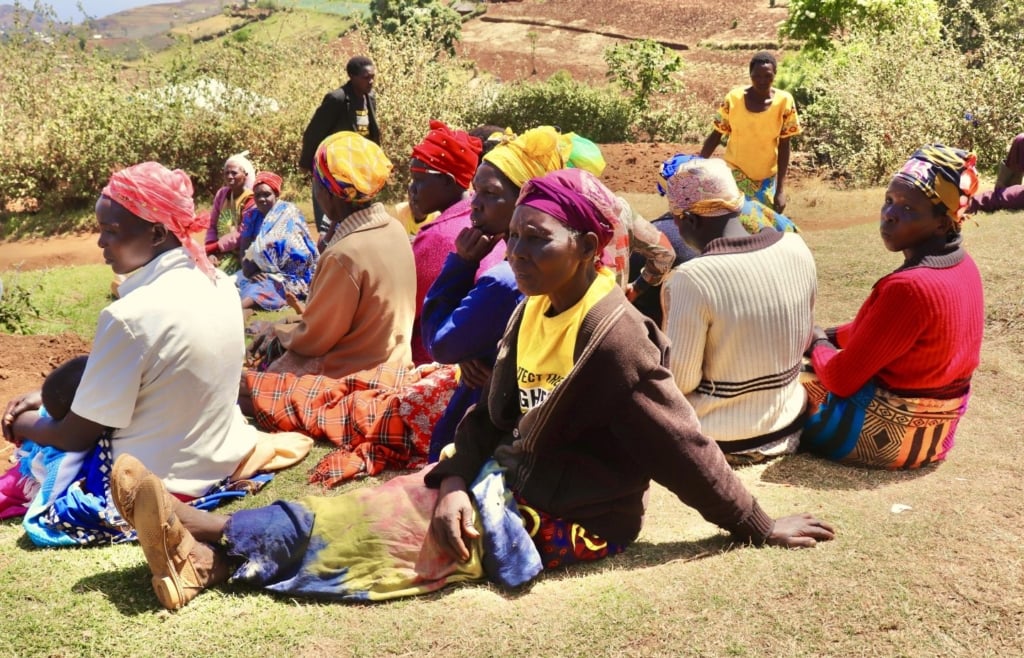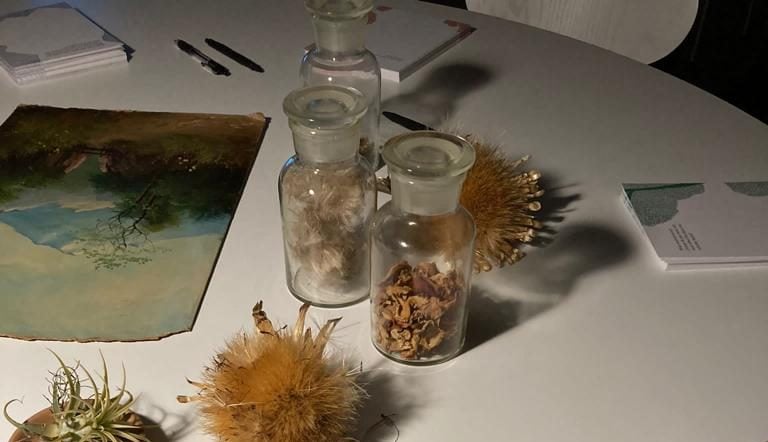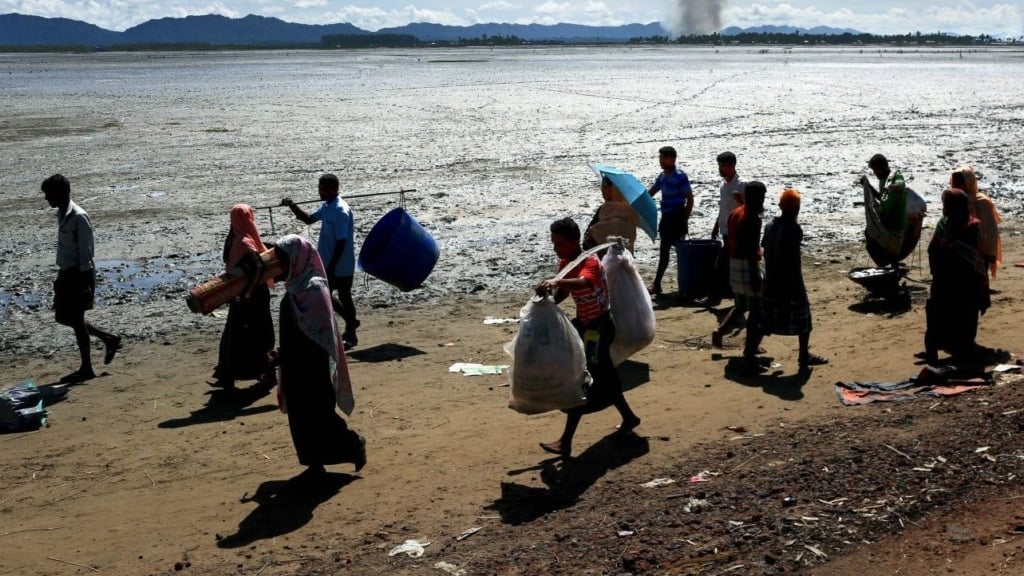India
-
Main languages: Hindi (official), Bangla, Telgu, Marathi, Tamil, Urdu, Gujarati, English
Main religions: Hinduism 966.2 million (79.8 per cent), Islam 172.2 million (14.2 per cent), Christianity 27.8 million (2.3 per cent), Sikhism 20.8 million (1.7 per cent), Buddhism 8.4 million (0.7 per cent), Jainism 4.5 million (0.4 per cent), Zoroastrianism (Parsis) (57,300) , Judaism (approximately 4,000)
Other minority and indigenous groups include Dalits (‘scheduled castes’) 201 million (16.6 per cent), Adivasis (‘scheduled tribes’) 104.3 million (8.6 per cent) Anglo-Indians, Andaman Islanders
India is the birthplace of two of the most widely practised world religions, Hinduism and Buddhism, and has within its borders a greater number of the followers of Islam than any country of the Middle East or North Africa. India could in many ways be described as a nation of minorities, yet it is nevertheless overwhelmingly Hindu. Although Hinduism may be seen as the one unifying thread running through the country as a whole, Hinduism is not a homogeneous religion. Its centuries-old traditions have been shaped by, and have in turn shaped, several different religious and social traditions. More importantly, cultural traditions often have much deeper resonances in India than those shaped by religion.
Amidst India’s cultural traditions is a rigid caste structure, a continuing symbol of identification and social stratification. 16.6 per cent of the total population of India consists of the scheduled castes which includes ‘Dalits’ also known as Harijans, or ‘Untouchables’. The Indian Constitution requires the government to define a list or schedule of the lowest castes in need of compensatory programmes. There are also within India, a significant population of 8.6 per cent indigenous peoples, the Adivasis, who are constitutionally described as ‘scheduled tribes’.
Unlike the large Muslim minority, besides Christians, Buddhists do not suffer high levels of discrimination and are not specifically targeted as minorities. Even within the broader Hindu tradition however, many groups have suffered discrimination and persecution. A prime example of the systematic discrimination to which a group may be subjected within Hinduism is evident from the case of the Dalits. The term Dalit, which means ‘the oppressed’, is an assertive term of self-identification, and as noted above, refers to what in strict legal and constitutional terms are known as the ‘scheduled castes’.
India’s indigenous peoples, Adivasis, like many other indigenous communities, might, with justification, claim that they remain victims under alien and colonial domination, even after the departure of the white colonizers. Adivasis of India do not represent a homogenous or unified community. There is a huge amount of diversity amongst the Adivasis: Nagas, although having indigenous claims, have nonetheless a distinct existence and differing political and constitutional aspirations from other Adivasi peoples, as do Boros of Assam (1.5 million, 2011 Census), given the fact that their control over land and natural resources, as well as their culture, is protected under special constitutional and administrative measures specific to tribes in north–eastern India (under the 6th Schedule of the Constitution that create ‘autonomous’ political territories). Adivasis in the rest of India are governed by the 5th Schedule of the Constitution that allows only very limited protection for them.
While the exploitation of Adivasis has been a historical as well as a contemporary phenomenon, and their exploitation has gained no respite from developments in post-colonial India, other ethnic and religious minorities became particular casualties of the march towards independence. The two most significant are the Kashmiris and the Sikhs; the issue of their right to existence and to self-determination has resulted in large-scale bloodshed, with tragic consequences. The numerous smaller minorities include Jews (approximately 4,000), Anglo-Indians (estimated 125,000) and Andaman Islanders.
-
India is one of the most religiously diverse countries in the world. While official statistics put the Hindu majority at 79.8 per cent, it also has a large Muslim minority (14.2 per cent) and a variety of other religions including Christians (2.3 per cent), Sikhs (1.7 per cent), Buddhists (0.7 per cent) and Jains (0.37 per cent). Not included in these figures are many other smaller communities including Bahá’i, Jews, Zoroastrians (mostly Parsi) and a range of animist faiths practised by different ethnic and indigenous groups across India. Given the country’s large overall population size of over 1.25 billion, India has the third largest Muslim population in the world at an estimated 172.2 million, behind Indonesia and Pakistan. Contributing to India’s diversity are a multiplicity of other intersecting identities, including caste, language, ethnicity and tribe. Many minorities in India therefore also face varying forms of intersectional discrimination: for example, Dalit Muslims and Christians, or religious minorities who are also linguistic minorities or belong to indigenous communities (Adivasis), with such challenges exacerbated for minority women.
In recent years there has been rising hostility against India’s religious minorities, particularly since the current right-wing Bharatiya Janata Party (BJP) government promoting Hindu nationalism took power at the national level after its election in May 2014. These trends have strengthened following the May 2019 elections, with the BJP retaining power with an even larger majority. The BJP has long been associated with right-wing Hindu extremist groups such as the Rashtriya Swayamsevak Sangh (RSS), and involved with the exploitation of communal elements, which contributed to its electoral victories in 2014 and 2019. While Prime Minister Narendra Modi himself has attempted to reorient his political image around business and economic development, critics have argued that extremist groups have been emboldened under BJP’s rule. Also highlighted has been his reluctance to condemn a spate of recent incidents targeting minorities, including hate speech, threats and a wave of attacks around cow slaughter that have particularly targeted Muslims as well as Hindus belonging to lower castes. Indeed, in the build up to the 2019 elections, a number of senior BJP leaders including Modi and former party president Amit Shah repeatedly resorted to polarizing messages and divisive rhetoric to garner votes. After having served two terms, Shah was replaced by Jagat Prakash Nadda at the beginning of 2020; Shah remains Home Minister.
This context has been further legitimized by policies and legislation introduced or strengthened at the state level in recent years, such as Gujarat’s announcement in March 2017 that cow slaughter would be punishable with a life sentence. Recent violence has often been led by vigilante groups affiliated with the Sangh Parivar, a broader group of organizations promoting an exclusionary form of Hindu nationalism, of which the ruling BJP is the political wing. These include, for example, those involved in ghar wapsi (‘homecoming’) campaigns engaging in mass conversions of religious minorities to Hinduism and so-called gau rakshaks (‘cow protectors’). The increasing presence of the latter, in particular, has seen the deliberate targeting of Muslim cattle traders, dairy farmers and others, with recent incidents including the lynching of 55-year old dairy farmer Pehlu Khan to death in Alwar, Rajasthan in April 2017. In other cases, accusations of cow slaughter or beef consumption have incited mob violence against Muslims and Dalits in a given locality, as was the case in Dadri (Uttar Pradesh) in 2015 and Una (Gujarat) in 2016. Although these are the most well-known cases, many other cow-related incidents have taken place in recent years and have become increasingly common since 2015. According to data collected by Human Rights Watch, at least 44 people including 36 Muslims were killed in cow-related violence between May 2015 and December 2018. These figures represent only a fraction of the number of hate incidents occurring during the same period in the country. Hate Crime Watch (a project of the Indian FactChecker organization) recorded 254 documented cases of crimes targeting religious minorities between January 2009 and October 2018, in which at least 91 people were killed and 579 were injured.
These attacks continued into 2019. Even as parliamentary elections were underway, a Christian person was killed and several minority members injured in two separate incidents of cow–related lynchings in Jharkhand and Assam states. This targeting of minorities has continued since the elections. A key issue that has emerged over the past several years has been the impact of social media in spreading hate messages and fomenting violence. Although tracking can be difficult on account of social media privacy settings which means that the real figure is probably far higher, there were at least 50 documented cases of mob violence caused by misinformation having been spread on social media, especially WhatsApp, during 2018 and 2019.
Ahead of elections, right-wing groups frequently invoke anti-minority sentiment, including through hate speech or specific campaigns, such as revived calls to build a Hindu temple at the site of the demolished Babri Masjid (or mosque) in Ayodhya. Despite attempts in the past by Prime Minister Narendra Modi to distance his public image from a religious nationalist agenda through promoting inclusive growth – ‘sabka saath, sabka vikas’ (‘solidarity with everyone, development for all’) – actors affiliated with the BJP re-ignited this issue, in an attempt to consolidate their support base ahead of national elections in 2019. Similar themes have been instrumentalized in the context of state level elections: for example, ahead of the 2017 BJP victory in Uttar Pradesh, the Prime Minister and other BJP officials drew on references to ‘love jihad’ and accusations of preferential resource distribution to Muslims – both of which have previously been invoked ahead of communal riots in the state. In addition to immediate challenges facing religious minorities in the aftermath of communal violence, a possible long-term impact is therefore greater entrenchment and institutionalization of Hindu nationalism and anti-minority sentiment.
While India’s religious minorities face varying degrees of violence and discrimination, communal violence has in particular targeted Muslims, and to a lesser degree Christians and Sikhs, who face varying degrees of socio-economic, cultural and legal discrimination. Constituting the largest religious minority, India’s Muslim population is dispersed throughout the country, with the majority living in Uttar Pradesh, Bihar, West Bengal and Kerala, as well as Jammu and Kashmir. Indian Muslims are far from homogenous, divided by factors including language, ethnicity and caste, amongst others, and there are considerable differences between Muslims both within and between each of India’s states.
While the majority of Muslims reside in Western and Eastern Uttar Pradesh, primarily in urban areas, there remain a number of differentiating factors – for example, identification as marginalized (officially called ‘Other Backward Class’ or OBC) or as belonging to a specific occupational group – which have a bearing on an individual’s socio-economic and political position.
While India is visibly struggling with general urban poverty and the growth of informal settlements, minorities experience these challenges more acutely. One in every five urban slum dwellers is Dalit, compared to only one in ten for urban India generally, and urban Dalits continue to report discrimination in access to housing and employment. Rapid urban expansion and urban beautification programmes for international events or upmarket housing have led to the destruction of many urban slums, including marginalized minority settlements. Expanding urban areas can even swallow former rural settlements, with little regard for their existing residents. Lower-caste and minority groups are especially vulnerable to land grabbing.
Dalits in rural areas suffer from entrenched caste discrimination, including ‘untouchability’, violence and harassment. Violence against Dalits is widespread, driven by the persistent effects of India’s caste system and the lack of justice for victims. Though attacks on Dalits are common throughout the country, the situation is particularly difficult in Bihar, often cited as India’s most lawless province, where the population is overwhelmingly rural and often located in remote areas. Recent years have seen attacks rise in Uttar Pradesh, Haryana, Gujarat and also Rajasthan, where BJP and upper–caste groups have regained power and authorities appear unwilling to take action against perpetrators. Anti-Dalit violence has also been common in Tamil Nadu and Andhra Pradesh.
Though the majority of Dalits still reside in rural areas, with just over 20 per cent based in urban areas, cities are often seen as a positive force in reducing caste divisions. While Dalits still face violence and discrimination in cities, strict social hierarchies are harder to enforce and violence generally is not as pervasive and brutal. Severe inequalities persist, however, with Dalits making up a large proportion of those engaged in the urban informal labour sector as domestic workers, rickshaw-pullers, street vendors and other poorly paid sectors. While many choose to migrate voluntarily for employment, many also end up in urban areas as a result of forcible displacement or evictions – issues which affect marginalized minorities disproportionately and continue to drive migration to urban areas. Of the 60 million or more people displaced by development projects since independence in 1947, 40 per cent are Adivasis and another 40 per cent are Dalits or other rural poor.
The challenges are especially acute for Dalit women, who are further exploited due to caste–gender prescriptions. ‘Manual scavenging’, for instance – the practice of removing human waste – is often ‘reserved’ for Dalit women, particularly in rural areas but frequently in urban centres as well, including by local government and municipal corporations who pay menial wages for this degrading and unsanitary task. In some cases, certain Dalit castes are expected to do the job and may be pressured or intimidated if they attempt to access alternative livelihoods. Nevertheless, urban areas can also offer women from excluded castes the opportunity to improve their lives.
In Manipur, in north-eastern India, minority and indigenous groups including Kuki, Meitei and Naga face human rights abuses by both government forces and armed groups. The region is locked in a decades-long conflict rooted in land rights and political self-determination. Civilians suffer the brunt of rights violations, with civil society groups documenting frequent instances of alleged extra-judicial executions of civilians by security forces. Similar killings were previously common in Assam in Nagaland, before ceasefire agreements were signed between the government and insurgent groups. Overall, state action in conflict zones needs to be seen in the context of the brutal counter-insurgency campaigns fought by Indian forces in different regions that have left a long trail of human rights violations against minorities. The fact that those regions in the country with large minority populations – Kashmir, the north-eastern states and Punjab, as well as central Indian hinterland – are or have all been sites of large-scale and systematic violations highlights the protracted failure of the Indian state to provide security to its minorities.
An explosive issue that can have a disastrous impact on millions of members of India’s minority populations is citizenship. In August 2019, the widely criticized National Register of Citizens (NRC) process was completed in the north-eastern state of Assam, leaving 1.9 million people at risk of statelessness. It has been followed by a proposal to conduct a countrywide National Register of Indian Citizens. The government even ordered all states to build detention centres to house those deemed to be ‘foreigners’.
In addition, the Citizenship Amendment Bill, passed on 11 December 2019, makes a number of changes to the Citizenship Act, 1955, including availing ‘illegal migrants’ a path to Indian citizenship through naturalization. Ostensibly framed as an effort to protect persecuted minorities, application of this new provision is restricted to ‘any person belonging to Hindu, Sikh, Buddhist, Jain, Parsi or Christian community from Afghanistan, Bangladesh or Pakistan, who entered into India on or before the 31st day of December, 2014’. By dividing populations on the basis of religion, and enabling expedited citizenship to non-Muslims, the amendments to the Citizenship Act further exacerbate the divisive dynamics of the National Register of Citizens, increasing the potential disenfranchisement of Muslims in India.
However, the Modi government has met with considerable resistance, with large-scale demonstrations across the country and over 60 constitutional challenges, including by the states of Kerala and Punjab. Numerous chief ministers have stated that they will not implement the new legislation. Protestors have faced police violence, and there have been numerous accounts of arrested demonstrators experiencing ill-treatment and torture while in detention. This was especially the case in Uttar Pradesh, where activists described a ‘reign of terror’ at the end of 2019.
-
Environment
The Republic of India is one of the largest countries in the world, sharing a northern frontier with Tibet in the People’s Republic of China, and with Nepal and Bhutan. To the north-west it borders Pakistan, to the north-east Burma and to the east Bangladesh. India’s great southern peninsula stretches far down into the tropical waters of the Indian Ocean, where its territorial boundaries extend to the Andaman and Nicobar Islands in the Bay of Bengal and the Lakshadweep archipelago in the Arabian Sea. In terms of its population, India – after China – is the second most populous country in the world. Even at present, India is more like a continent than a country, with a population larger than that of either Africa or the Americas.
History
Pre-colonial period
For millennia, India has attracted large waves of migration of different peoples, representing a diverse range of ethnicities and faiths, to add to the indigenous population of the region. These migrations have mostly been from the west, through present day Punjab, beginning with Indo-Aryan communities from the Caucasus region from around 3,000 BCE through to Arabs, Turks and Central Asians in medieval times. Some migration has also taken place more recently in the East, in what is now North East India, from current day Thailand and Myanmar. Elsewhere, mercantile communities and those fleeing conflict or persecution have also made India their home, mostly on the western coast, in present day Kerala, Maharashtra and Gujarat states. This historical pattern of migration in what is now a very diverse country has determined to a large extent the social hierarchies in place in India today, and the situation of India’s minorities in particular.
The entrenchment of the caste system elevated the socially and politically dominant groups arriving in India over socially excluded ‘outcastes’, mostly indigenous, now known as Dalits and Adivasis. Much of this social stratification was legitimized through Hindu scriptural sanction. Attempts by these excluded communities to liberate themselves through social reform movements – including those that eventually formed Buddhist and Jain orders – were often targeted by the powerful elites. The advent of Arabs, Turks and central Asians in northern India during the early medieval era, who settled in the territory they conquered, saw the introduction of Islam to India and the emergence of new powerbrokers whose relationship with local leaders ranged between accommodation and confrontation. At a popular level, this period also saw mass conversions by ‘outcastes’ to Islam, across northern and eastern India, encouraged by Sufi preachers’ message of devotion to the one God and social equality. In the far south, specifically Kerala, Christian and later Muslim communities, mostly traders from West Asia, had already begun to form even earlier, with locals welcoming them in their midst, thus providing space for the spread of both faiths there.
Overall, by the end of the 17th century, before the arrival of the British, India was a largely Hindu dominated land, with a significant Muslim population. Dalits and Adivasis, many of whom had converted to Islam, formed a very large section of this population. Political power that had remained largely in the hands of Muslim rulers for centuries had begun to fragment with the break–up of Mughal rule, while various Hindu chieftains had developed circles of influence, some larger than others.
Colonial and post-colonial periods
In this context the British entered India as colonial rulers. Initially the British did not interfere greatly in social matters, including relations between different social groups, except for the occasional reform efforts such as the banning of Sati (widow burning) when local pressure for reform mounted. But after the 1857 rebellion against colonial rule, when Muslims and Hindus banded together under the symbolic authority of the last Mughal emperor in an attempt to oust them, the British adopted an increasingly interventionist approach to stave off further challenge to its rule. This ultimately had the effect of playing one group off against the other.
Consequently, communal violence has played a key role in post–independence India, in part influenced by the legacy of colonial rule in the sub-continent. British rule in India contributed significantly to the growing division of the Indian population through its classification of communities along religious lines, particularly in the decades leading up to independence in 1947. This culminated in Partition and the creation of India and Pakistan: a traumatic separation along communal lines that was accompanied by widespread religiously motivated violence, leaving between 1 and 2 million killed, tens of thousands sexually assaulted and as many as 15 million displaced. A key impact of colonialism and the trauma of Partition has been to promote the formation of exclusionary identities, with ongoing implications for religious minorities.
Partition not only took a terrible toll of life, but also gave rise to one of the largest transfers of population in the twentieth century. The threat to India’s multicultural, multi-ethnic, multi-religious polity of aggressive Hindu fundamentalism has raised fears among the country’s many different religious, ethnic and cultural minorities, regarding the future of India’s democratic structures and the role of the state in ensuring the protection of minority rights.
The period following Partition saw continued outbreaks of communal violence, with a rise in incidents taking place in the 1960s, often involving the direct planning of political parties and right-wing nationalists, particularly the Rashtriya Swayamsevak Sangh (RSS). Coupled with social and economic discrimination, this encouraged a number of Muslims who had initially remained in India to migrate to Pakistan. Disproportionate numbers of more educated and influential Muslims were amongst those who left, contributing to even greater marginalization of Muslims in India, a condition influenced by the insecurity they faced. Violence against India’s religious minorities spiked in the 1980s, with a number of high–profile attacks including on Bengali Muslims in Assam (1983), Sikhs in Delhi (1984), and Muslims in different parts of India in the late 1980s, linked to the Babri Masjid demolition movement. These incidents reflected the instrumentalization of communal violence by parties across the political spectrum, including the Indian National Congress (INC) and the Bharatiya Janata Party (BJP), the latter of which saw its political influence rise in the 1980s.
The BJP’s promotion of an exclusionary Hindu nationalism was demonstrated in the 1980s and 1990s through its involvement in a number of high-profile cases of communal violence, including the destruction of the Babri Masjid in 1992. This incident, contesting the presence of a 16th century mosque in a location claimed by some to be the birthplace of Ram, led not only to its demolition by an organized crowd of Hindu protestors but also to the subsequent outbreak of communal violence, with hundreds killed in riots across the country, the majority Muslims. This incident was the culmination of a protracted campaign by Hindu extremists, supported by a number of high-ranking officials who either encouraged or failed to prevent these attacks.
Religion is not, however, the only, or even the most significant, fault line in India’s multi-layered polity. Economic transformation, and the lack of it in many cases, has led to the rise of extremism in various parts of India. The issue of language has played an important part in shaping the modern political agenda. The Official Languages Act (1963) established Hindi language as the single official language of India from 1965, with English as an ‘associate additional official language’. Such an arrangement was the recipe of massive demonstrations and self-immolations in Tamil Nadu and subsequently stretching to many states. Pressure groups representing a range of issues – from women and the environment to trade unions and unorganized labour – have exerted, and continue to exert, pressure upon the state. Movements with a broad range of political ideologies, sometimes with a radical vision for change, have often created problems for the fragile democratic foundations of the Indian state.
Governance
India, like many of the countries of the postcolonial world, remains to a great extent an artificial construct of the colonial era. Beneath the surface it is a country burdened with ethnic, religious and linguistic conflicts. It has nevertheless shown a remarkable degree of political resilience and more than seven decades after achieving independence, it remains the world’s largest democracy. Even so, minority issues are increasingly taking centre stage in Indian politics, whether in the form of separatist movements, demands for increased political representation, or the need to provide protection to its many religions and cultures. Many of these conflicts are yet to be resolved, and the challenge for India will be to put in place processes that enable minority issues to be discussed and resolved for the benefit of the country as a whole, while ensuring the collective survival of the many minority communities which form an integral part of the country.
Troublingly, the last few decades have seen the gradual erosion of constitutional provisions for the protection and promotion of minorities and indigenous peoples, while a number of regressive measures with negative implications for minorities have been written into India’s laws and policies. Behind much of this narrowing of space for India’s minorities is a worrying feature in recent years of the emergence of fundamentalism in India. Religious chauvinism, for example through the rise of religiously fundamental political parties, has been on the increase and this poses a threat to future communal relations. For the promotion and protection of the rights of the minorities, the traditions of democracy and secularism that have been the characteristic of constitutional and political developments of post-independence India are virtues which need to be preserved.
The recently re-elected BJP’s promotion of Hindu nationalism, in this regard, is not only exclusionary towards India’s minorities, but has contributed to an overall climate of intolerance in India. This has been accompanied by the recent selection of figures widely acknowledged to spread communal tensions to prominent positions. Human rights activists and organizations meanwhile have increasingly been labelled ‘anti-nationals’, have been accused or charged with sedition, or have had their operations curtailed, with sections of the media and political actors contributing to rising hostility. These trends have further strengthened the targeting of minorities. Over the years, India has seen a number of what have been variously referred to as ‘communal violence’ and ‘communal riots’, ranging in severity from minor skirmishes during religious processions to the systematic and violent targeting of minorities, such as occurred in 1983 in Assam (against Muslims), 1984 in Delhi (against Sikhs), 2002 in Gujarat (against Muslims), and 2008 in Orissa (against Christians). Rights activists highlight the inseparability of this form of targeted violence from a broader range of discrimination and human rights violations on communal grounds, such as hate speech, exclusionary educational materials, the effective ‘ghettoization’ of minority communities and barriers to employment, housing and other needs.
A particularly reprehensible form that this targeting has taken in recent years is cow-related vigilantism, with public lynchings of Muslims, Dalits and Adivasis engaged in animal husbandry. Anti-cow slaughter vigilantism has become an increasingly common feature of communal violence since the election of the BJP government in 2014. The slaughter of cows, regarded by Hindus as sacred, has long been a source of tension, as well as mobilization for right-wing groups promoting Hindu nationalism. While it is not only Muslims that consume beef – indeed, many lower-caste and poor Hindus rely on beef as an affordable food source for their survival – they have been the key target of Hindu extremists. These groups and their activities have proliferated in recent years, emboldened by both anti-cow slaughter legislations – in place in several states – and calls to strengthen these measures. This has been championed by the ruling BJP: for example, ahead of the 2014 election, Modi delivered a number of speeches accusing the Congress Party of engaging in a ‘pink revolution’, a euphemism for the expansion of the meat industry. More recently, cow protection has featured prominently in state-level elections in Bihar (2015) and Uttar Pradesh (2016), two of India’s states with the highest levels of communal violence. Cow slaughter is also a criminal offence in the majority of India’s states – the exceptions being states in the Northeast, Kerala, and West Bengal – yet the nature and severity of anti-cow slaughter legislation differs. In Haryana, for instance, cow slaughter and beef consumption carry sentences of up to 10 years, comparable to the punishment meted out for far more serious offences such as slave trading and culpable homicide, with the burden of proof reportedly falling to the accused – a situation that effectively amounts to a ‘presumption of guilt’.
There have also been recent attempts to tighten these restrictions. In March 2015, Maharashtra saw stricter measures introduced, formally banning the slaughter of bulls, bullocks, and calves in addition to cows, punishable with a fine and up to five years in prison. In 2017 the ruling BJP government in the state of Gujarat amended its cow protection law, increasing punishment for cow slaughter to life imprisonment, the strictest punishment currently in place. This builds on an earlier ban on cow slaughter that was introduced in 2011, when Narendra Modi was Chief Minister of the state. Although there is no national ban on cow-slaughter in place, recent rules put forward by the government have been criticized as introducing a ‘back door’ national ban.
There are other structural factors too that disadvantage Indian minorities. While India’s Constitution is widely regarded as a progressive document based upon pillars of democracy and secularism that establishes strong principles of non-discrimination, these principles have been undermined by measures such as the 1950 Presidential Order. This has been critiqued for side–lining religious minorities, in particular its exclusion of socially marginalized Muslims and Christians from accessing affirmative action measures designed to promote equality, and has served to entrench their exclusion. Nevertheless, there are provisions within the Constitution which guarantee the rights of the country’s diverse population, including their rights to religious freedom. The Constitution guarantees, among other rights, freedom of conscience and the right to practise religion openly, as well as the rights of religious minorities to establish their own educational institutions. In addition to Constitutional provisions regarding freedom of religion and the rights of religious minorities, there are laws within India’s Penal Code (1860) and Code Criminal Procedure (1973) which set forth protections against communal violence and guarantee life and security for all citizens. The poor enforcement of these provisions is a serious concern, however, with the already weak rule of law evident in many parts of India especially unresponsive to the needs of minority communities. With administrative systems increasingly politicized in a context of growing majoritarianism, minorities find little solace in the theoretical guarantees of the Constitution when implementation of these protections remains limited in practice.
In January 2017, the Supreme Court of India delivered a ruling which advanced a ‘broad and purposive interpretation’ of the Representation of Peoples Act 1952, regarding the conduct of elections. While the law had previously prohibited candidates from invoking their own religion for the purpose of securing votes, the ruling expanded this to also include invocation of the religion of the intended audience. While welcomed by some on the grounds as it would reaffirm the electoral process as a ‘secular activity’, others have criticized the ruling, arguing that identity-based mobilization offers an important avenue for marginalized groups, such as Dalits, to address their exclusion. Concerns have also been raised regarding whether a 1995 ruling on the same reference, which defined ‘Hindutva’ as a ‘way of life and not a religion in India’, may act as a loophole for right-wing Hindu groups, led by the ruling BJP, whose advancement of exclusionary political agendas are often central to promoting communal violence against India’s minorities. Overall, constitutional provisions and laws in place provide a framework to protect the rights of religious minorities and address communal violence. However, operationalization of these provisions through policy and legislation is limited, and implementation of laws regarding communal violence remains weak. There are also issues regarding judicial consistency; narrow judicial interpr
-
General
South Asia Collective
Website: http://sacollective.misaal.ngo/
South Asia Forum for Human Rights
Website: http://www.safhr.orgPeople’s Union for Civil Liberties
Website: http://www.pucl.org/
People’s Union for Democratic Rights
Website: https://www.pudr.org/
Dalits
National Campaign on Dalit Human Rights
Website: http://www.dalits.orgNational Confederation of Dalit and Adivasi Organisations (NACDAOR)
Website: http://nacdaor.org/
Dalit Freedom Network (USA)
Website: http://www.dalitnetwork.orgCaste Watch (UK)
Website: http://www.castewatchuk.org/
Muslims
Misaal Foundation
Website: http://www.misaal.ngo/
Centre for the Study of Society and Secularism
Website: https://csss-isla.com
Quill Foundation
Website: http://www.quillfoundation.com/
Adivasis
Indian Confederation of Indigenous and Tribal Peoples
National Confederation of Dalit and Adivasi Organisations (NACDAOR)
Website: http://nacdaor.org/
Jagdalpur Legal Aid Group
Website: www.jaglag.org
Ankuran
Website: http://www.ankuran.inNagas
Naga Peoples’ Movement for Human Rights (NPMHR)
Jews of India
Dinur Center for Research in Jewish History (Israel)
Website: http://jewishhistory.huji.ac.il/World Jewish Congress
Website: https://www.worldjewishcongress.org/en
Andaman Islanders
Survival International (UK)
Website: http://www.survival-international.orgKashmir
Jammu and Kashmir Coalition of Civil Society
Association of Parents of Disappeared Persons
Anglo-Indians
The All India Anglo Indian association
Updated June 2020
Related content
Latest
View all-
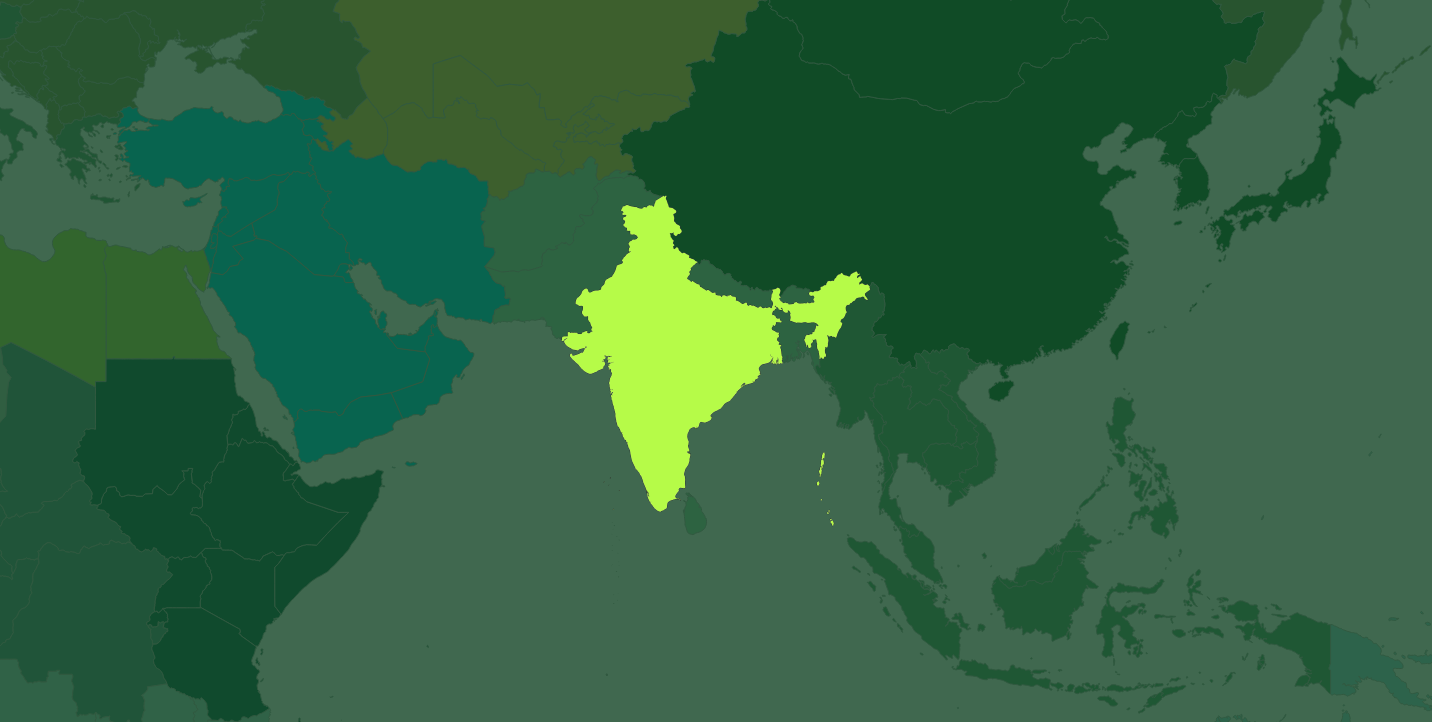
20 March 2024
Navigating human rights challenges: India’s escalating concerns
At the 55th Session of the UN Human Rights Council, taking place on 20 March 2024, Glenn Payot addressed the Council on the escalating…
-

22 August 2023
India and Pakistan share more than a border
In both states, religious persecution and hatred have become vital tools for the concentration of power. But the violence that emerges from…
-
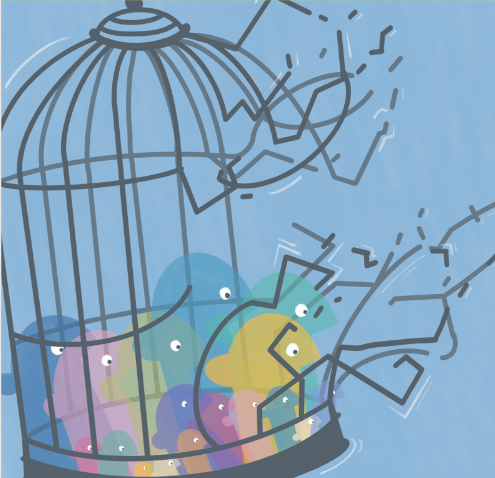
16 February 2023
Minority rights protection in South Asia curtailed by minimal engagement with human rights mechanisms, report finds
Poor engagement by South Asian states with international human rights mechanisms is providing fertile ground for a wide range of rights…
Minority stories
-
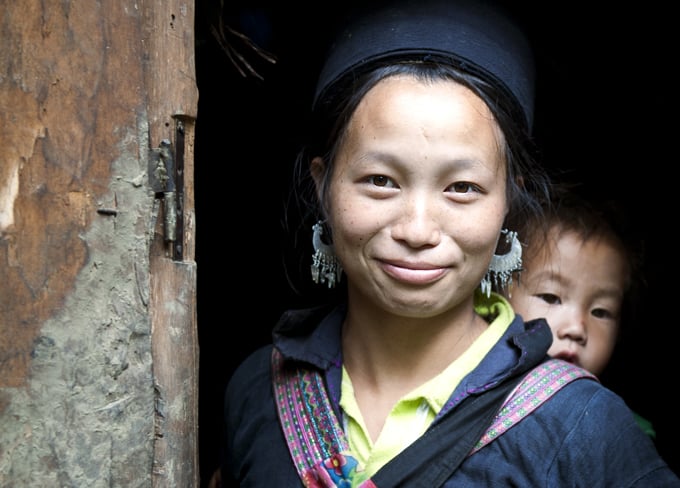
25 February 2016
Life at the Margins: The Challenges of Multiple Discrimination
Minorities and indigenous peoples, already marginalised, face further challenges on account of other aspects of their identity – their age, gender, livelihood, disabilities, sexuality or gender identity.
- East Africa
- Discrimination
- Minority stories
-
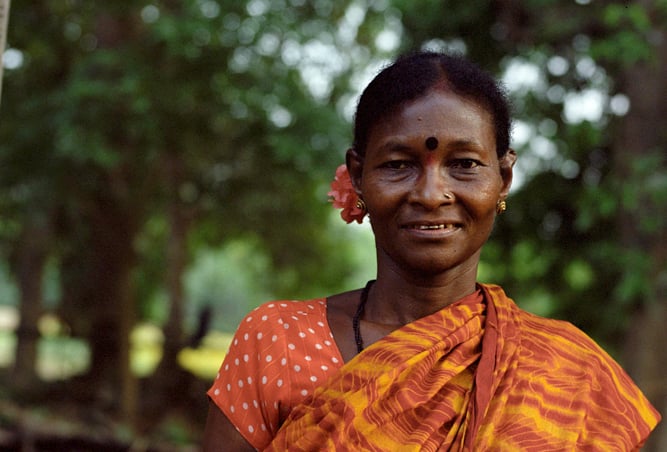
28 October 2015
Afro-Descendants: A Global Picture
Drawing on a range of case studies, this publication seeks to highlight the invisibility and discrimination that persist for people of African descent to this day, as well as celebrate their achievements as activists, artists and citizens.
- Central Africa
- Discrimination
- Minority stories
Reports and briefings
View all-
29 June 2017
A narrowing space: Violence and discrimination against India’s religious minorities
Religious minorities have long been the target of a range of different forms of persecution, such as hate crimes, threats,…
-
19 August 2006
Minority Rights and Conflict Prevention: Case Study of Conflicts in Indian Jammu and Kashmir, Punjab and Nagaland
This study explores India’s policies and practice towards minorities, and three violent ethnic conflicts: the Sikh struggle for an…
Partner publications
View all-
16 February 2023
South Asia State of Minorities Report 2022 – Weakening Human Rights Commitments and Its Impact on Minorities
The condition of minorities in South Asia, home to a fifth of humankind, is grim, to say the least. Religious, ethnic and linguistic…
-
24 January 2022
South Asia State of Minorities Report 2021 – Hate Speech against Minorities
In most of the countries of South Asia, hate speech is increasingly used by majority groups against minorities on the basis of religion,…
-
7 December 2020
South Asia State of Minorities Report 2020 – Minorities and shrinking civic space
Across South Asia, civil society is being increasingly constrained. It is either too nascent, due to late democratic development, or where…
Events
-
 Video on demand
Video on demand 17 October 2022 • 1:00 – 3:00 pm CEST
Securing justice for violations against religious minorities in India
Ahead of India’s fourth Universal Period Review (UPR) cycle, this event addresses the deteriorating situation facing the country’s…
-
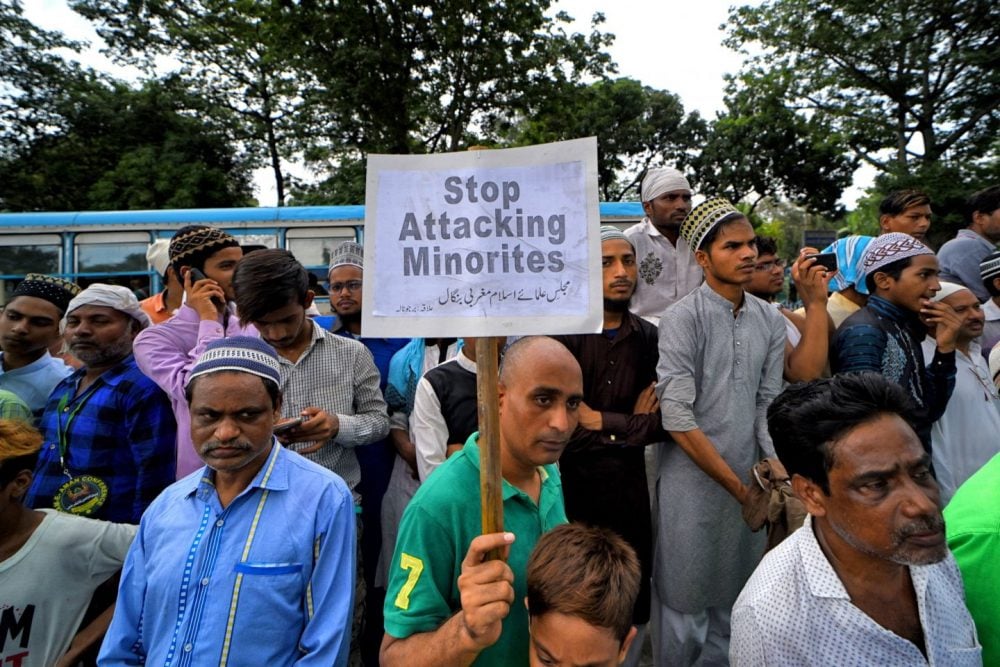 Video on demand
Video on demand 16 March 2021 • 2:00 – 3:00 pm CET
From hate to violence: Preventing & countering hate speech against minorities in South Asia
South Asia has experienced heightened incidence of hate speech and incitement to hatred, with grave consequences for its minorities –…
Don’t miss out
- Updates to this country profile
- New publications and resources
Receive updates about this country or territory
-
Our strategy
We work with ethnic, religious and linguistic minorities, and indigenous peoples to secure their rights and promote understanding between communities.
-
-



